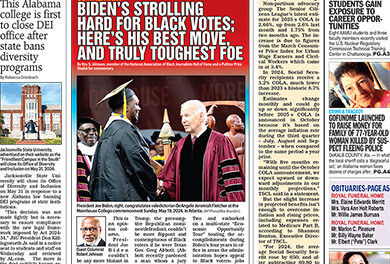By Ariyana Griffin
AFRO Staff Writer
agriffin@afro.com
The Baltimore Museum of Industry is home to a permanent exhibit highlighting the work and history of Baltimore’s longest-running family-owned newspaper, The AFRO-American.

The AFRO, founded in 1892 by John H. Murphy Sr., a formerly enslaved Civil War veteran, has been a beacon of light for Black communities. Its dedication to spotlighting issues that targets Black communities, not only nationally but internationally, led to the growth of the paper. For over 130 years, the AFRO has been a vital platform, ensuring that Black stories are not lost to history as well as providing Black reporters with the opportunity to tell stories.
The exhibit focuses on the enormous work it takes to publish and print a newspaper, especially with the lack of technology during the beginning phases of the paper. It has various printing presses and other materials that were crucial to cycling a weekly paper. It also has a highly accurate replica of what the desk of founder John H. Murphy Sr. ‘s desk would have looked like.
Maggi Marzolf, the archives manager at the Baltimore Museum of Industry, expressed the significance of newspapers and the way that they document history.
“Newspapers contribute to what’s called the historical record. It’s a clear record maintained of all the events and happenings throughout history,” Marzolf said. “For the AFRO to have a record of over 100 years is absolutely critical to preserving and saving that historical record–having a resource for others to look into when they have questions about any particular point in history that the AFRO may have covered.”
Afro Charities, the organization responsible for maintaining the AFRO’s archives, serves as the primary source for museums and exhibitions to gain access to the historic database. It plays a crucial role in preserving the historical records of the AFRO, ensuring that its rich history is not lost to time. These archives serve as a valuable resource for researchers, historians and the general public, providing a unique and authentic perspective on the events and issues that shaped American history.

Deyane Moses, Afro Charities’ director of programs and partnerships, shared that the paper tells a history that would otherwise – and has been – erased.
“The paper has chronicled world history from a Black lens and historically, we know that our opinions, our voices and our people have not been represented in the news. And, when they are represented in the news it’s often from a negative light.”
Moses continued, “All Black newspapers are a critical voice but the AFRO, in particular, is very critical because the AFRO had news reporters everywhere around the country. This is a resource for not only our people, Black people, but also for the world, for all races, genders and for everyone in society. “
She shared that the AFRO has a collection of over 3 million photos alone, and the documents they have obtained are extremely fragile, leading them to move towards a digital space for everyone to enjoy.
The AFRO’s current publisher and great-granddaughter of Murphy Sr. encouraged the community to visit the “Print Shop” exhibit at the Baltimore Museum of Industry and shared that “it is really an honor to be included.”
The post AFRO included in permanent exhibit at Baltimore Museum of Industry appeared first on AFRO American Newspapers.











